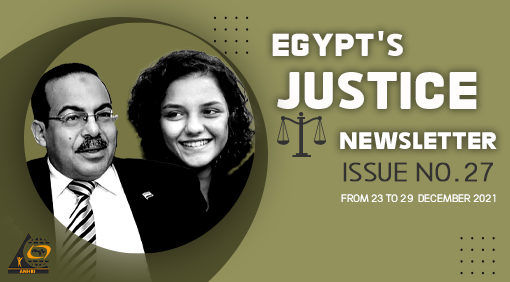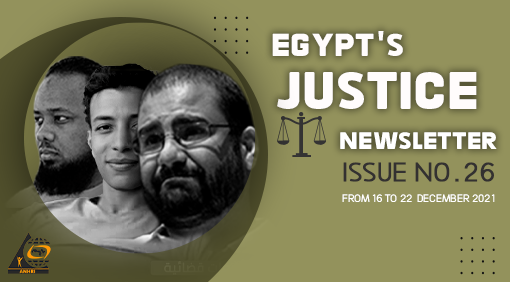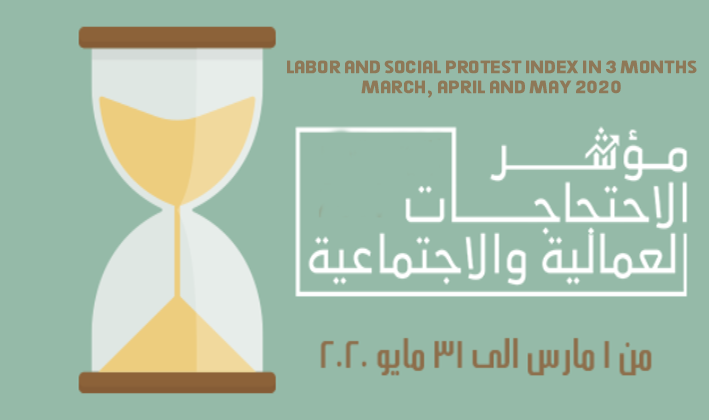
Introduction
The Coronavirus (Covid-19) pandemic stimulates incidents and inflames protest movement in Egypt. Some of the protests are organized out of a state of awareness; like that staged by medical workers demanding to provide them with health care and necessary protective equipment amid the spread of the virus, and the social workers’ protests denouncing their arbitrary dismissal from work. Other protests were driven by the survival instinct, such as the ones organized to pray for the coronavirus crisis to come to an end, and the one protesting the burial of a female doctor, who had tested positive for the coronavirus, in her village’s graves.
Protests escalated during the month of April and most of them were concentrated in the governorates of Giza, Cairo, Alexandria, and Menoufia.
ANHRI’s Freedom of Expression for Labor and Social Movements Program monitored (74 protests) during the months of March, April, and May 2020. Out of these protests there were (40 labor and professional protests) and (34 social protests), as outlined in the following lines:
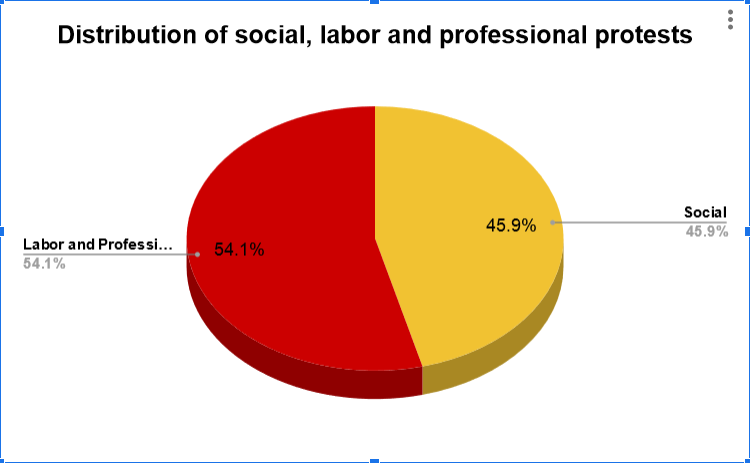
First: Labor and professional protests
The program has monitored 40 labor and professional protests during the months of March, April and May, distributed as follows:
- Protests or vigils: 17 cases
- Labor strike: 10 cases
- Threatening to protest: 4 cases
- Sit-ins: 3 cases
- Complaints and/or petitions filed: 3 cases
- Suicide/ attempted suicide: 2 cases
- Hunger strike: 1 case
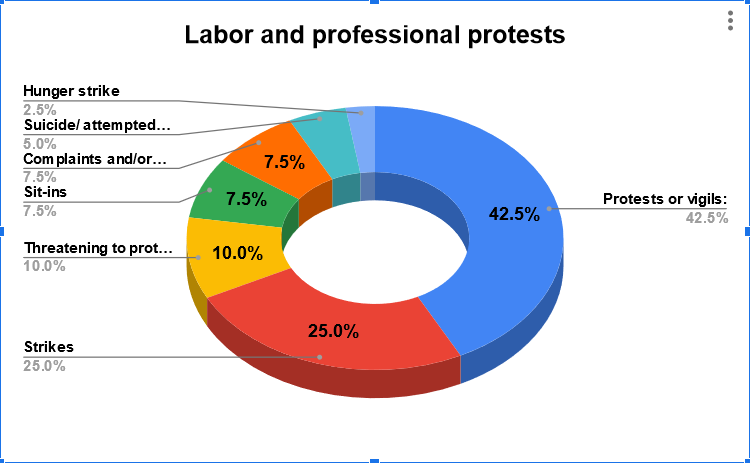
Second: Social Protests:
The program monitored 34 social protests during the reporting period, detailed in the following chart:
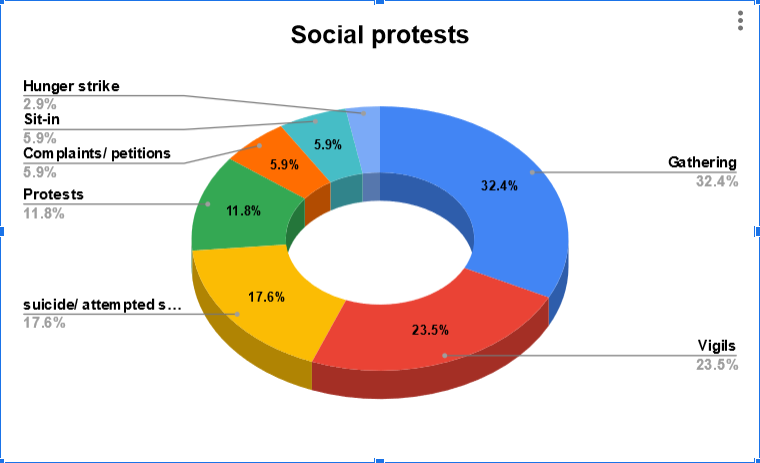
- Gathering occupied the first place among the social protests’ methods with 11 cases
- Protest rallies/ vigils came second in social protests with 8 cases (8 vigils)
- Suicide/attempted suicide came in the third place with 6 cases
- Protesting came fourth with 4 cases
- Submitting complaints or petitions came fifth with 2 cases each
- Hunger strike came in the sixth and last place with only one case
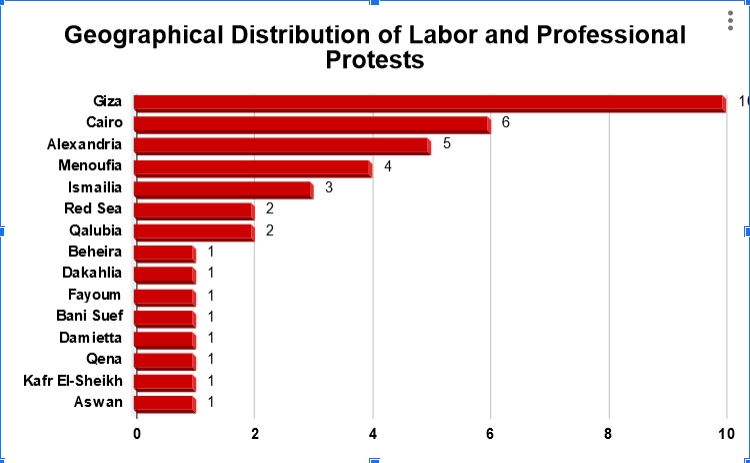
Third: Geographical Distribution of Labor and Professional Protests:
Giza governorate was at the forefront of labor and professional protests with 10 protests, followed by Cairo with 6 protests. Then Alexandria governorate came third with 5 protests, followed by Menoufia Governorate came with four protests, and Ismailia Governorate came in the fifth place with three protests. Both the Red Sea and Qalyubia governorates came in the sixth place by two protests each. At the end of the list came the following governorates: Beheira, Dakahlia, Fayoum, Beni Suef, Damietta, Qena, Kafr El Sheikh, and Aswan, with one protest each.
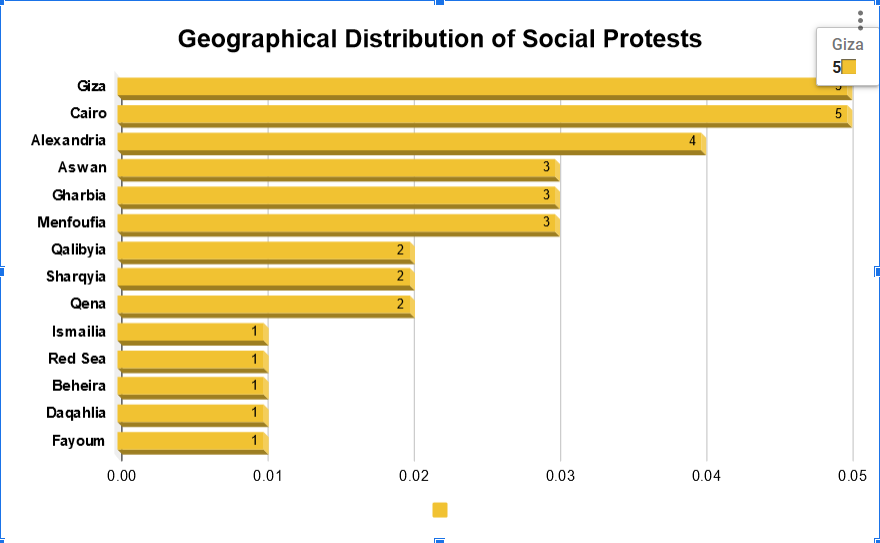
Fourth: Geographical Distribution of Social Protests:
Giza and Cairo governorates topped the social protests with five protests organized during the reporting period in each of them, followed by Alexandria with 4 protests. Then came in the third place: Aswan, Gharbia, and Menoufia governorates, with three protests each, while Qalubia, Sharqia, and Qena governorates came in the fourth place with two protests each. The following governorates came at the end of the list with one protest each: Ismailia, Red Sea, Beheira, Dakahlia, and Fayoum.
Fifth: Sectorial Distribution of Labor and Professional Protests:
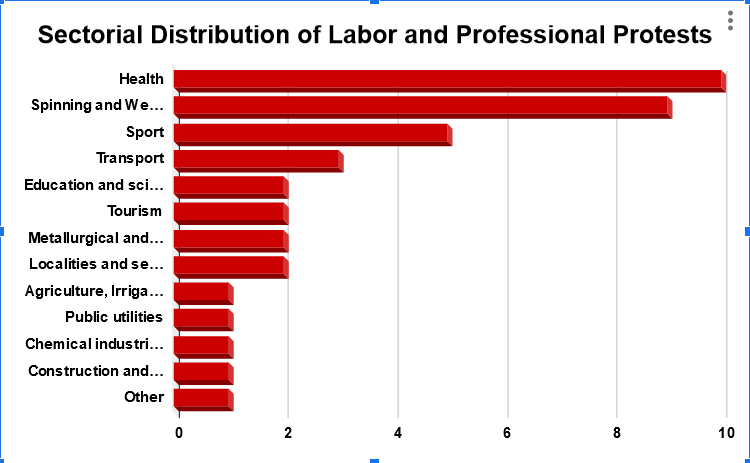
The (Health) sector topped the labor and professional sectors with 10 protests during the reporting period, due to the spread of the coronavirus pandemic and the lack of medical supplies and protective tools for medical teams working in the Ministry of Health-affiliated hospitals. (Spinning and Weaving) sector came second with 9 protests, followed by the (Sport) sector in the third place with 5 protests. The (Transportation) sector came in the fourth place with 3 protests, followed by the sectors of (Education and Scientific Research, Tourism, Metallurgical and Engineering industries, Localities and services) with 2 protests in each sector. At the end of the list came the sectors of: (Agriculture, Irrigation, Fishing, Public utilities, Chemical industries, and Construction and Building materials) with one protest each.
Sixth: Sectorial Distribution of Social Protests:
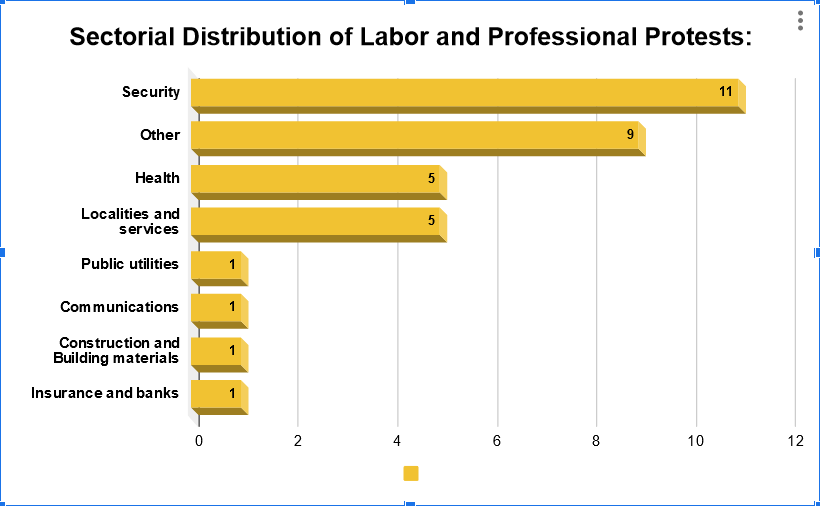
The Security sector came at the forefront of the social protests during the three months with 11 protests. The other sector came in second place with 9 protests. These sectors include: suicide cases and protests organized by expatriates stranded in front of their embassies and dozens of Alexandria residents demonstrating to welcome Ramadan Holy month and denouncing the coronavirus pandemic. The sectors of (Health, Localities and Services) came in the third place with five protests each, followed by the sectors of (Public utilities, Communications, Construction, Insurance and banks) with one protest each.
In the end, we would like to emphasize that all the protests took place during the reporting period were organized without any coordination with trade union organizations, whether labor or professional unions, except for the doctors ’protests in which the Doctors Syndicate stood to defend the doctors; demanding to address shortcomings in protection for doctors, shortages in medical supplies, the unpreparedness of hospitals, and the lack of proper training on how to deal with patients in quarantine hospitals. The Doctors Syndicate also demanded that PCR testing be conducted on medical staff dealing with coronavirus cases, and that quarantine facilities be allocated for infected medical professionals nationwide. It also demanded that families of doctors and nurses who fall victim to the virus be financially compensated in the same way as police officers and armed forces servicemen and women who die in the line of duty.
In response, the Prime Minister and the Minister of Health decided to hold meetings with Hussein Khairy, the head of the Doctors ’Syndicate, and responded to two of the Syndicate’s demands; by ordering the immediate expansion of PCR testing for medical staff, and the allocation of areas in each hospital to isolate infected doctors. (1)
- This report is based on a number of sources, including field monitoring of the Labor and Social Movements Program, in addition to many news reports published on “Al-Watan, Al-Masry Al-Youm, Al-Wafd, Masrawy, Al-Bawaba News, Al-Fajr, and Youm7” news websites.





